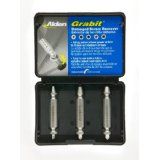K8MHZ
Senior Member
- Occupation
- Electrician
Does anyone here have a good trick for getting out device (receptacle, switch, etc.) screws that have been painted over?
We were in an apartment were the paint on the receptacles was so thick you couldn't get an ice cube tester in them. The screws were painted over and digging the paint out was painstaking to nearly impossible. Just getting the screws out added up to 20 minutes or more per device.
I just dug them out with a screwdriver and did my best. I had plenty of time to ponder my dilemma, though.
Has anyone tried using a heat gun to soften the paint in the screw slots? If so, how easy is it to damage the surrounding paint?
Does anyone know of a tool made especially for clearing dried paint out of screw slots?
These receptacles are 12 inches AFF with not long enough conductors and a PITA to work on even if the screws cooperated. Anything to reduce the time working on these would be appreciated.
We were in an apartment were the paint on the receptacles was so thick you couldn't get an ice cube tester in them. The screws were painted over and digging the paint out was painstaking to nearly impossible. Just getting the screws out added up to 20 minutes or more per device.
I just dug them out with a screwdriver and did my best. I had plenty of time to ponder my dilemma, though.
Has anyone tried using a heat gun to soften the paint in the screw slots? If so, how easy is it to damage the surrounding paint?
Does anyone know of a tool made especially for clearing dried paint out of screw slots?
These receptacles are 12 inches AFF with not long enough conductors and a PITA to work on even if the screws cooperated. Anything to reduce the time working on these would be appreciated.


